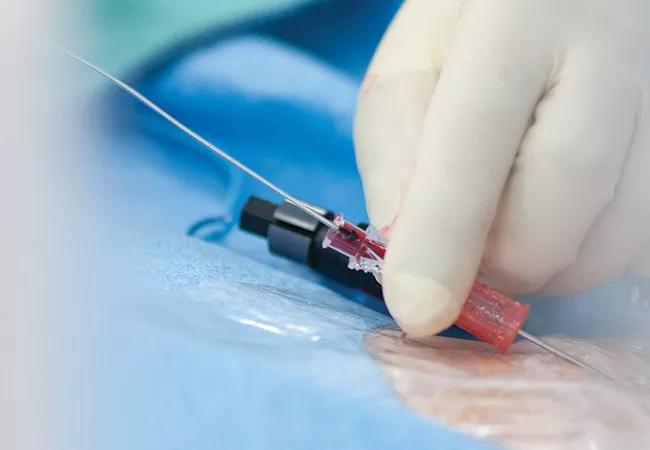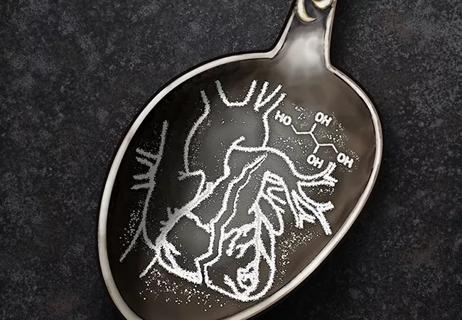PARTNER 3 and CoreValve Low Risk reveal pros and cons of both approaches

Transfemoral transcatheter aortic valve replacement (TAVR) was associated with better outcomes as measured by a composite end point of death, stroke or readmission to hospital at one-year follow-up compared with surgical AVR (SAVR) in a selected group of older patients with severe aortic stenosis at low surgical risk not needing other procedures. So finds the multicenter PARTNER 3 randomized trial presented at the American College of Cardiology’s (ACC) Scientific Session on March 17. However, there was no difference in death, and patients having open surgery had better orifice areas with SAVR, less gradients across valves, fewer leaks around valves and less serious heart rhythm problems.
Advertisement
Cleveland Clinic is a non-profit academic medical center. Advertising on our site helps support our mission. We do not endorse non-Cleveland Clinic products or services. Policy
Additionally, an interim analysis of the multicenter CoreValve Low Risk randomized trial with follow-up through 12 months showed TAVR to be noninferior to SAVR in a similar low-risk patient population.
Both studies were presented as late-breaking clinical trials at the ACC meeting and simultaneously published by the New England Journal of Medicine.
“The PARTNER 3 results make FDA approval of TAVR for this low-risk population even more likely and will undoubtedly fuel patient interest in this less-invasive option,” says PARTNER 3 co-author and steering committee member Samir Kapadia, MD, Section Head of Interventional Cardiology at Cleveland Clinic.
He notes that the most important determinants of whether a patient is a good candidate for TAVR are anatomic suitability for the valve, which is usually assessed by CT scan, and a thorough analysis to exclude other conditions that would require cardiac surgery — most commonly coronary artery disease requiring bypass surgery, enlargement of the aorta or other severe heart valve problems. Indeed, one-third of patients could not be entered into the study based on pre-procedure screening. In addition, patients with bicuspid valves were not candidates.
PARTNER 3 was conducted to determine whether the use of TAVR ― which has evolved from inoperable patients to patients at high and then intermediate surgical risk ― should evolve further to patients at low surgical risk.
Patients at 71 centers with severe aortic stenosis and low surgical risk (Society of Thoracic Surgeons [STS] risk score < 4 percent) were randomized 1:1 to either TAVR with transfemoral placement of a third-generation balloon-expandable valve (SAPIEN 3) or SAVR with a commercially available bioprosthetic valve.
Advertisement
The primary end point was a composite of death, stroke or rehospitalization at one year. Analyses were performed for noninferiority and superiority, both in the as-treated population.
Of 1,000 patients randomized, 950 underwent the assigned procedure and 948 were included in the as-treated analysis. Mean patient age was 73 years, and mean STS risk score was 1.9 percent. Men made up 69.3 percent of the population.
The rate of the composite primary end point of death, stroke or readmission at one year was 8.5 percent in the TAVR group versus 15.1 percent in the SAVR group, for an absolute difference of 6.6 percentage points favoring TAVR. This met the prespecified criteria for noninferiority (P < 0.001) and for superiority of TAVR (hazard ratio = 0.54; 95% CI, 0.37-0.79; P = 0.001) for these criteria.
“Multiple sensitivity analyses confirmed the robustness of these results from the primary analysis,” notes Dr. Kapadia.
Results for each of the three components of the primary end point favored TAVR at both 30 days and one year. SAVR, however, did better on other outcomes.
TAVR also showed better outcomes in other secondary end points, including a lower rate of new-onset atrial fibrillation, a shorter index hospitalization and a lower risk of poor treatment outcome at 30 days (defined as death or a low quality-of-life score) (P < 0.001 for all). However, at one year, some categories were better with SAVR.
“These results are especially notable because the outcomes with SAVR in this trial were quite good — 0.9 percent mortality at 30 days and a 2.9 percent composite rate of death or disabling stroke at one year — despite 26 percent of patients having other concurrent needed procedures, mostly coronary artery bypass,” observes cardiothoracic surgeon and Cleveland Clinic Heart & Vascular Institute Chair Lars Svensson, MD, PhD, who served on the PARTNER executive committee. “Nevertheless, we had no deaths in a comparable subgroup of 368 isolated aortic valve replacements performed at Cleveland Clinic’s main campus in 2018 (among over 2,000 SAVR procedures overall), irrespective of risk category, reoperation, bicuspid valves, or the presence of endocarditis or other complicating factors. Institutions will need to examine their own outcomes in light of this study to recommend the best approach to patients based on their specific needs. In the trial, the 30-day mortality rate was 0.4 percent for TAVR and 0.9 percent for SAVR, with no meaningful difference.”
Advertisement
The other big presentation on TAVR in low-risk patients at the ACC meeting was a prespecified interim analysis of the CoreValve Low Risk study. Investigators analyzed findings to date on 1,403 patients with severe aortic stenosis after a majority of patients had reached 12-month follow-up. Patients were randomized 1:1 to either TAVR with a self-expanding supra-annular bioprosthesis (CoreValve, Evolut R or Evolut PRO) or SAVR with a bioprosthetic valve.
With 12-month follow-up data available for 784 patients, the study’s primary end point — estimated incidence of death or disabling stroke at 24 months — was reached by statistically comparable proportions of patients in the TAVR (5.3 percent) and SAVR (6.7 percent) groups, meeting the criterion for noninferiority but not for superiority.
The TAVR group had lower rates of disabling stroke, acute kidney injury, bleeding events and atrial fibrillation but higher rates of aortic regurgitation and permanent pacemaker placement.
Results will be more definitive when 24-month follow-up is completed for the entire cohort, the researchers noted.
“One important difference between the trials is that readmission to hospital was not a primary end point in the CoreValve study, whereas it was in PARTNER 3,” notes Dr. Svensson. “One can debate whether readmission carries the same concern as an end point that death and stroke do.”
“Other differences in the two trials’ results include somewhat higher rates of paravalvular leak and need for pacemakers in the CoreVale study,” adds Dr. Kapadia. “In-depth analysis of these issues may help guide patient selection to mitigate these risks.”
Advertisement
Investigators with both studies noted that one key question looms large over the collective findings from these trials: What about valve durability?
“These findings are encouraging for TAVR in low-risk patients,” Dr. Svensson says, “but the major question around effectiveness is the issue of potential long-term structural deterioration of TAVR valves in low-risk patients, who tend to be younger than other TAVR candidates. There is also some evidence of accelerated stroke and death in TAVR patients over time, and that is why the late data at 10 years will be critical to better understand the issues. We know that long term to 20 years, the reoperation risks are low in the surgical patients based on our previous publications.”
The protocols of both PARTNER 3 and CoreValve Low Risk are designed to answer the durability question, with follow-up continuing through at least 10 years, but the answers remain far off.
“These positive findings will clearly drive interest in TAVR among patients at low surgical risk, who represent the largest group of patients with severe aortic stenosis,” notes Dr. Kapadia. “The challenge for the heart team in the next few years is to ensure proper selection of patients based on anatomy and the risks of SAVR and TAVR while we gain additional insights into valve durability. At Cleveland Clinic we have long used a heart team approach where cardiologists, interventional cardiologists and cardiac surgeons collaborate to make sure each patient is analyzed closely and treated in an optimal way, whether with TAVR or SAVR.”
Advertisement
“It is important to recognize that these studies were done in a select subgroup of patients, representing about 20 percent of our patients, who had femoral artery access, did not have bicuspid valves, were older and did not have additional reasons for open-heart operation,” adds Dr. Svensson. “The latter include severe regurgitation as the primary pathology, mitral valve disease, aneurysms, atrial fibrillation needing ablation, advanced coronary artery disease, infected valves, low coronaries, calcium in the outflow tract and other reasons that led to exclusion from the trials.”
Advertisement

Study authors urge reevaluation of the sweetener’s safety designation by food regulators

Surprise findings argue for caution about testosterone use in men at risk for fracture

Findings support emphasis on markers of frailty related to, but not dependent on, age
![GettyImages-1252287413 [Converted]](https://assets.clevelandclinic.org/transform/StoryPanel/350804b2-f1e4-4d97-a277-9629cf45af3e/23-HVI-4120348_redlining_650x450_jpg?w=3840&q=75)
Large database study reveals lingering health consequences of decades-old discrimination

Additional analyses of the two trials presented at 2023 ESC Congress

Prospective SPIRIT-HCM trial demonstrates broad gains over 12-month follow-up

Review of our recent experience shows it’s still a safe option

Machine learning may improve risk prediction and guide therapy